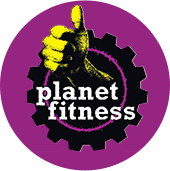Is it possible to exercise less—say 15-20 minutes a day vs. 30-40—and still get healthy?
Absolutely.
In fact, we recommend our members try out this particular type of time-saving exercise to help them improve a myriad of health markers, from blood sugar imbalance to heart health.
What is this miracle exercise?
It’s super simple. Anyone can do it. It doesn’t require any equipment (though you can use weights if you’d like).
You can do it indoors, outdoors, at the gym, at home or with a friend. It costs no money. And it can take as little as 15 minutes a day 3-5 times a week.
It’s called High Intensity Interval Training, also known as “HIIT” or “Burst” training—and it’s one of the most effective types of exercises for improving your fitness, weight and whole body health.
What Exactly is HIIT?
High intensity interval training is the practice of working out really hard—either running, cycling, doing burpees, etc.—for a short period of time (as little as 1 minute) then resting a couple minutes, then going onto another exercise.
An entire HIIT workout typically lasts just 15-20 minutes, but its benefits continue long after.
It’s true.
Research has shown that HIIT raises your metabolism during and for hours after the workout (even better than lengthy cardio) . Which means you’ll burn a ton of calories while you’re exercising and after.
Plus, High Intensity Interval Training workouts are much safer and heart-healthy than lengthy endurance exercises
While many of us baby boomers and generation Xers grew up believing grueling cardio sessions were our ticket to good health (feel the burn!), we now know that’s not necessarily the case.
Today, many experts believe short, intense bursts of exercise are much safer for your health and longevity than lengthy cardio sessions.
Think about it.
We’ve all heard the puzzling stories of super-fit and lean marathon runners who have died from sudden cardiac arrest.
This phenomenon led researchers to question the merits of continuous cardio and over-exercising; and what they’ve discovered is that too much cardio can damage the cardiovascular system and lead to a variety of heart diseases.
For example, research has shown that veteran endurance athletes such as marathon runners or professional cyclists, have a 5-fold increase in the prevalence of atrial fibrillation.
This isn’t all that shocking considering the tremendous amount of stress that hours and hours and years and years of extreme cardio puts on our entire body.
So, while a moderate amount of endurance exercise is still considered beneficial extreme cardio sessions are not…
…and with HIIT training, you can get all the benefits of moderate cardio (and much more), in less time without the wear and tear on your heart, muscles, etc.
The Many Scientifically-Proven Health Benefits of HIIT
Besides the time-savings and continuous metabolic boost you’ll get from a HIIT workout, interval training has also been proven effective for:
- Reducing your risk of Type 2 diabetes—by improving insulin sensitivity
- Controlling blood sugar in Type 2 diabetics—by improving glucose metabolism and insulin sensitivity
- Reducing your risk of heart disease—by increasing “good” cholesterol (HDL)
- Reducing heart rate, blood pressure and improving overall cardiovascular health
- Burning off stress and helping quell anxiety—all types of exercise can help with stress, but researchers at the University of Missouri found HIIT was especially beneficial at reducing stress and anxiety for women
- Balancing hormones—In addition to helping balance insulin levels, HIIT has been shown to reduce excess sex hormones in women and help balance out leptin levels (leptin controls appetite)
- Plus, HIIT’s been shown more enjoyable than grueling cardio sessions—which means you’re more likely to stick with it and reap the benefits
How to Get Started Incorporating HIIT into your regular workout routine
There are nearly endless ways to design a HIIT workout, from elaborate obstacle courses to a simple walk/run routine.
Here are some ways to start incorporating HIIT into your regular exercise schedule:
- Modify your daily walk to include on and off speed walking or a bit of running
- Take a HIIT class at the gym
- Incorporate HIIT into a bike ride
- Jump rope
- Hiking is a natural way to practice HIIT
- You can also find hundreds of HIIT workouts for free on YouTube and other channels
The format is devilishly simple—push it hard for a minute or so, rest for a couple minutes, and repeat for 15-20 minutes. That’s it.
As always, if you have an existing heart or health condition, check with your healthcare provider before beginning a HIIT—or any type of exercise routine.
To Recap How to Exercise Less and Be Healthier for It:
- High intensity interval training (aka: HIIT) is one of the healthful and time-efficient forms of exercise you can do
- A HIIT workout only lasts 15-20 minutes and consists of short bursts of high-intensity activity, followed by rest, then repeat
- HIIT workouts have been shown more effective than lengthy cardio, because they raise your metabolism during and for hours after the workout—so you burn more calories
- HIIT workouts are especially beneficial for those with Type 2 diabetes and other blood sugar issues, women coping with stress and anxiety, those with hormonal issues, and anyone pressed for time
- HIIT workouts can be practiced 3-5 times a week pretty much anywhere with no equipment required
It bears repeating, if you have any type of health issue be sure to talk with you doctor or Knew Health Coach before beginning a HIIT or any type of training.
For those in good health, be sure to start slowly with HIIT. You should be pushing your body, but not to the point you feel faint or sick.
Start out with 30 seconds of high intensity movement (like jogging in place, jump rope, or rebounding) and 1-2 minutes of rest, and work up from there.
And remember, even if you can only do 10 seconds with 2 minutes of rest, that’s still a great start and your body will still benefit! Just keep slowly increasing the intensity and be sure to drink plenty of water.
Cheers to exercising less for better health!
-The Knew Health Team









































